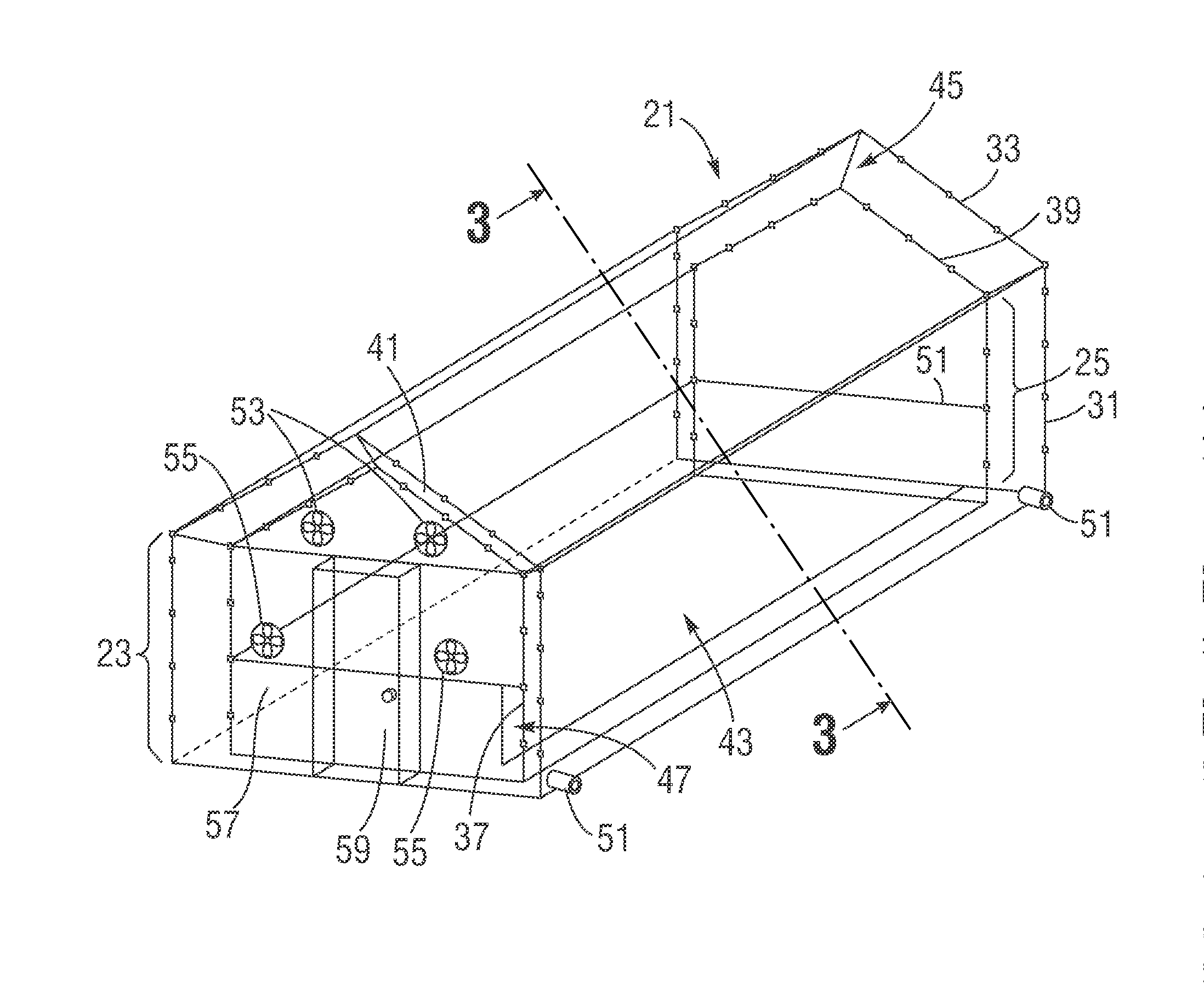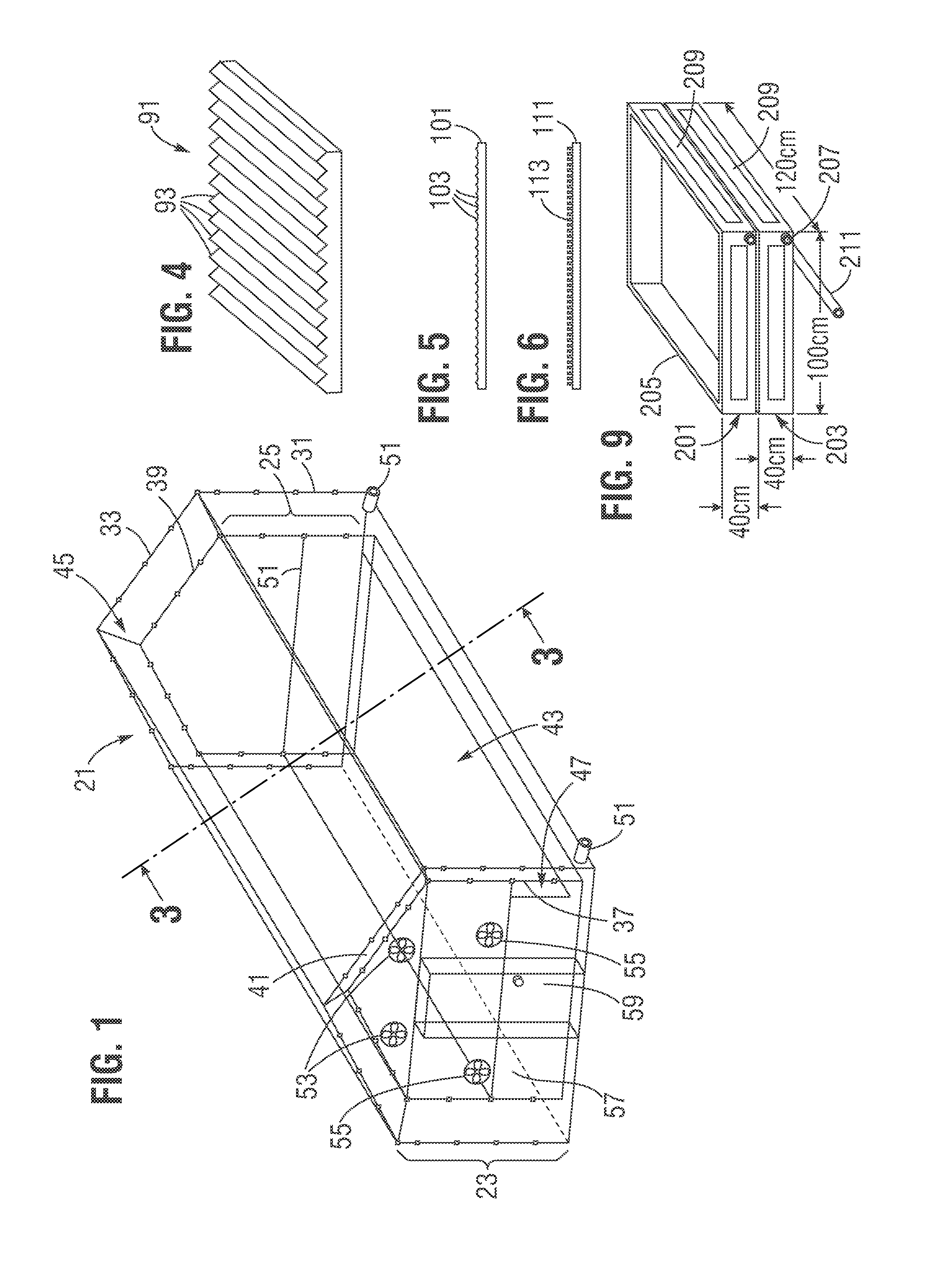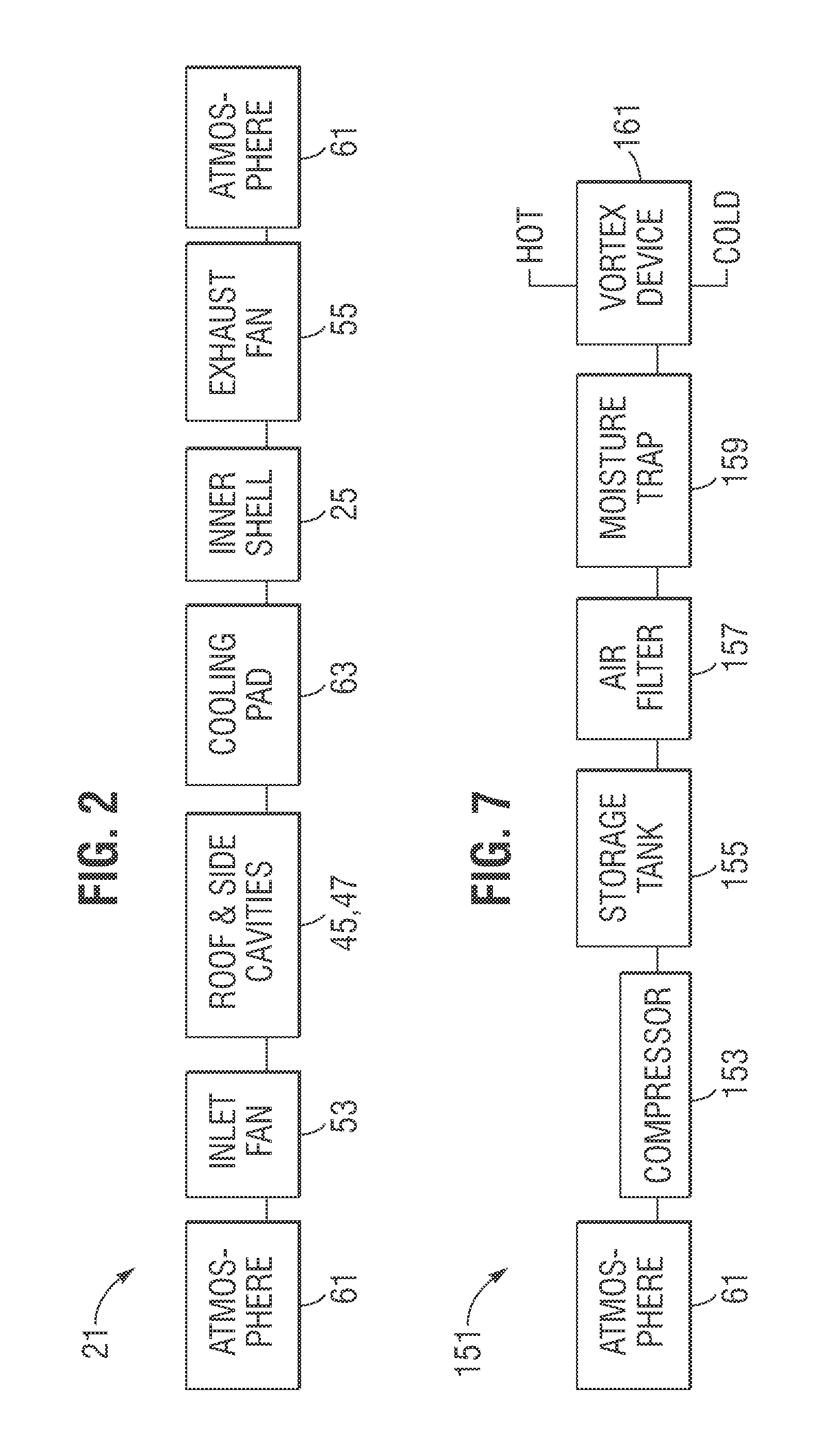Desalination greenhouse
a technology of desalination greenhouse and greenhouse body, which is applied in the field of desalination greenhouse, can solve the problems of greenhouse overheating, excessive water consumption, and cooling evaporate, and achieve the effects of reducing relative humidity, reducing entry into the interior, and increasing the temperature of the greenhous
- Summary
- Abstract
- Description
- Claims
- Application Information
AI Technical Summary
Benefits of technology
Problems solved by technology
Method used
Image
Examples
Embodiment Construction
[0037]Referring to FIG. 1 a perspective skeletal view of one type of embodiment of a desalination greenhouse 21 which is shown as a long rectangular building, but need not be of the shape shown. The desalination greenhouse 21 is shown in a transparent view and includes an outer shell 23 for containment of water vapor, desalination, and light transmission; and an inner shell 25 which is in effect an inner greenhouse, and is for crop production, evaporative cooling and condensation of moisture.
[0038]The outer shell 23 shown is of simple construction and includes a series of vertical walls 31 which include side walls and end walls and topped by a roof 33 which includes a pair of sloped roof walls. Likewise, inner shell 25 shown is of simple construction and includes a series of vertical walls 37 which include side walls and end walls and topped by a roof 39 which includes a pair of sloped roof walls. Roofs 33, 39 of both greenhouses are preferably similar to each other (although shown ...
PUM
 Login to View More
Login to View More Abstract
Description
Claims
Application Information
 Login to View More
Login to View More - R&D
- Intellectual Property
- Life Sciences
- Materials
- Tech Scout
- Unparalleled Data Quality
- Higher Quality Content
- 60% Fewer Hallucinations
Browse by: Latest US Patents, China's latest patents, Technical Efficacy Thesaurus, Application Domain, Technology Topic, Popular Technical Reports.
© 2025 PatSnap. All rights reserved.Legal|Privacy policy|Modern Slavery Act Transparency Statement|Sitemap|About US| Contact US: help@patsnap.com



